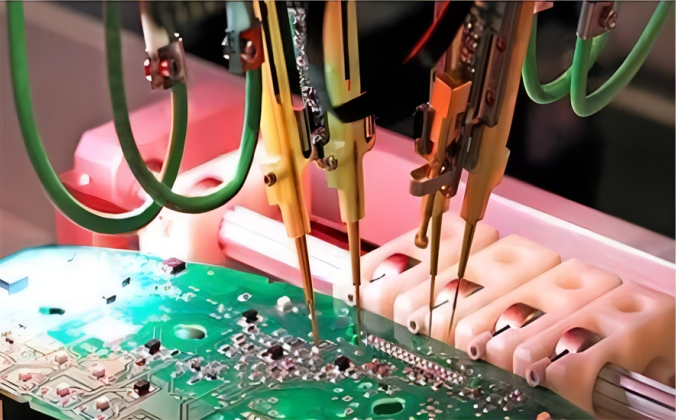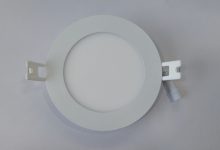Rigid Flex PCB Assembly: The Best of Both Worlds for Complex Electronics

In the rapidly evolving world of electronics, the demand for compact, durable, and high-performance devices is greater than ever. To meet these demands, manufacturers are increasingly turning to Rigid Flex PCB assembly—a hybrid solution that combines the benefits of both rigid and flexible printed circuit boards (PCBs). This unique combination allows designers to create electronics that are more compact, lightweight, and reliable without sacrificing performance. In this blog, we will explore what Rigid Flex PCB assembly is, how it works, its advantages, and the industries that benefit most from this technology.
What is Rigid Flex PCB Assembly?
Rigid Flex PCB assembly refers to the process of combining rigid and flexible PCBs into a single, integrated unit. The flexible sections of the circuit are designed to bend and conform to specific shapes, while the rigid sections provide structural support and stability for the components. This hybrid design is achieved by bonding flexible substrates, usually made from polyimide, with rigid substrates such as fiberglass. The result is a circuit board that can offer the mechanical strength of a rigid PCB while also providing the flexibility needed to fit into compact or unique shapes, perfect for designs where space and weight are critical.
Rigid Flex PCBs are often used in applications that require high-performance circuits with complex layouts. These boards can perform multiple functions in a single design, reducing the need for multiple PCBs and connectors, and simplifying assembly. The integration of both rigid and flexible elements means that Rigid Flex PCBs can handle more complex geometries while maintaining the flexibility to fit into tight spaces and accommodate dynamic movement.
How Does Rigid Flex PCB Assembly Work?
The process of Rigid Flex PCB assembly is more intricate than traditional PCB assembly, as it combines the benefits of both rigid and flexible boards. Here’s an overview of how the assembly process works:
- Design and Layout: The first step in the Rigid Flex PCB assembly process is the design of the circuit board. Engineers use specialized software to create a layout that incorporates both rigid and flexible areas. This design needs to carefully consider how the flexible sections will bend and how the rigid parts will hold components securely. Proper planning ensures that the board is functional and can withstand the physical stresses it will endure during use.
- Fabrication of Rigid and Flexible Substrates: The fabrication of a Rigid Flex PCB involves producing both rigid and flexible substrates. The rigid parts are typically made from materials like FR4 (fiberglass), while the flexible parts are made from materials such as polyimide. The rigid and flexible substrates are then bonded together using advanced techniques like adhesive lamination or heat bonding. The flexible areas are routed with copper traces, just like a traditional flexible PCB, while the rigid areas maintain the conventional trace designs of a standard PCB.
- Component Placement and Soldering: Once the Rigid Flex PCB is fabricated, components are placed onto the board, either using surface-mount technology (SMT) or through-hole components. The flexible areas may require additional considerations to ensure that the components stay in place even when the PCB is bent or twisted. The components are then soldered using standard methods like wave soldering or reflow soldering, depending on the design.
- Testing and Quality Control: After assembly, Rigid Flex PCBs undergo a thorough testing process to ensure functionality, reliability, and durability. This includes electrical tests, such as continuity checks, to confirm the integrity of the circuit. The flexibility of the board is also tested to ensure that the flexible areas do not break or fail under repeated bending. Non-destructive testing, such as X-ray inspection, may be used to identify any hidden defects.
Advantages of Rigid Flex PCB Assembly
- Space-Saving Design: One of the most significant advantages of Rigid Flex PCBs is their ability to save space. By combining rigid and flexible sections in a single board, designers can eliminate the need for multiple separate PCBs and connectors. This reduces the overall size of the device, making it ideal for compact products where every millimeter counts, such as in smartphones, wearables, and medical devices.
- Lightweight: Rigid Flex PCBs are much lighter than traditional PCBs with separate rigid and flexible boards. This is a key advantage in industries like aerospace and automotive, where weight reduction is critical. The lighter design of Rigid Flex PCBs helps to enhance the performance and portability of electronic devices, especially in portable and wearable products.
- Enhanced Durability and Reliability: The combination of rigid and flexible materials makes Rigid Flex PCBs more durable than traditional flexible PCBs. The rigid sections offer mechanical support and protect delicate components, while the flexible sections can bend without causing damage to the circuit. This makes Rigid Flex PCBs more reliable in applications where the circuit may experience stress, vibration, or movement, such as in medical devices or automotive electronics.
- Design Flexibility: The ability to integrate rigid and flexible areas into a single board allows for more creative and innovative designs. Rigid Flex PCBs can be bent, folded, or twisted to fit into spaces that would be impossible with a traditional rigid PCB. This flexibility also allows for complex geometries, such as curved or three-dimensional designs, which are increasingly common in modern electronics.
- Improved Signal Integrity: Rigid Flex PCBs offer improved signal integrity compared to traditional flexible circuits. Since the rigid sections can hold components securely and provide stable connections, the electrical signals are less likely to degrade due to movement or stress. This is particularly important in high-frequency applications, such as in communications devices or high-performance computing systems.
- Reduced Interconnects and Assembly Complexity: The integration of rigid and flexible sections into a single board reduces the need for multiple interconnects and connectors. This simplifies the assembly process and reduces the risk of failure points. Fewer interconnects mean there is less chance of issues such as loose connections or signal interference, improving overall reliability.
Applications of Rigid Flex PCB Assembly
Rigid Flex PCBs are ideal for a wide range of applications, particularly those that require high performance, durability, and space efficiency. Some common industries and applications where Rigid Flex PCBs are used include:
- Consumer Electronics: Smartphones, tablets, and laptops often use Rigid Flex PCBs to improve performance while reducing size and weight. The flexibility allows for unique form factors that make the devices more portable and user-friendly.
- Medical Devices: Rigid Flex PCBs are used in implantable medical devices, diagnostic equipment, and wearable health monitors due to their reliability and ability to withstand the physical stresses of the human body.
- Automotive: In the automotive industry, Rigid Flex PCBs are used in applications such as advanced driver assistance systems (ADAS), airbags, and in-vehicle infotainment systems. Their durability and ability to function in extreme conditions make them ideal for these high-stakes environments.
- Aerospace and Defense: Rigid Flex PCBs are often used in aerospace and military applications due to their ability to withstand high vibrations, harsh conditions, and limited space. They are used in systems like satellites, aircraft, and communication devices.
- Industrial Equipment: Rigid Flex PCBs are used in a variety of industrial devices, including robotics, sensors, and control systems. Their ability to operate in complex environments with limited space makes them ideal for modern industrial designs.
Conclusion
Rigid Flex PCB assembly combines the best of both rigid and flexible circuit board technology, offering a powerful solution for complex electronic designs. By integrating rigid and flexible sections into a single board, manufacturers can create high-performance, lightweight, and space-efficient products that are durable and reliable. With applications across a wide range of industries, including consumer electronics, medical devices, aerospace, and automotive, Rigid Flex PCBs are proving to be a game-changer in modern electronics design. Whether you’re developing a compact wearable, an advanced automotive system, or a high-performance medical device, Rigid Flex PCB assembly offers the versatility and reliability needed to push the boundaries of what’s possible in electronic manufacturing.








